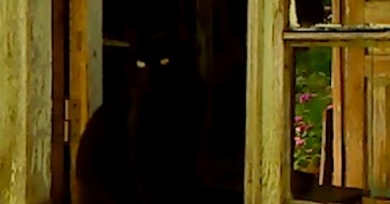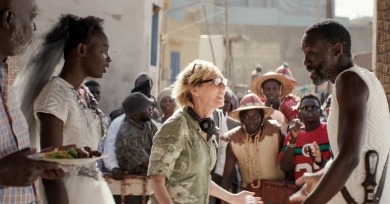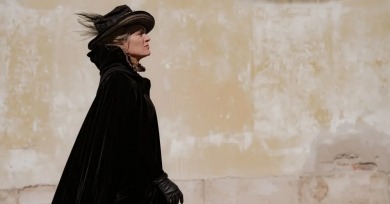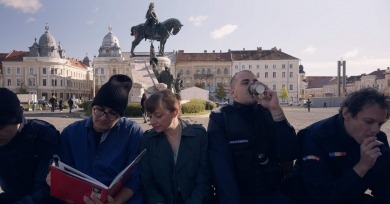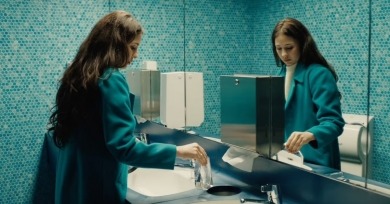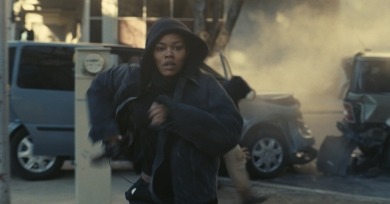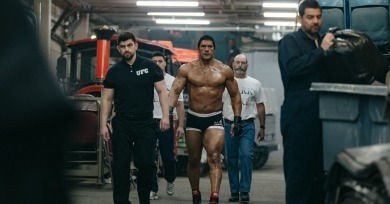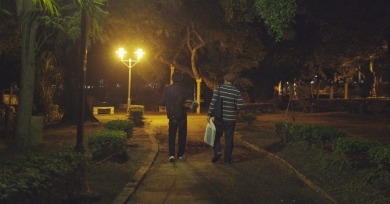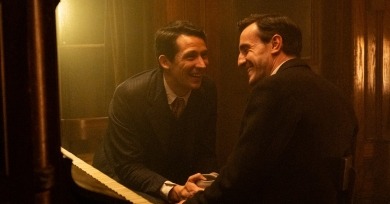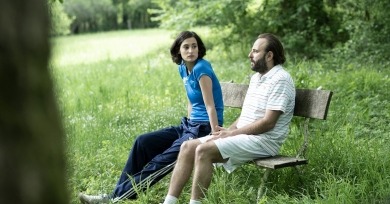Reviews
What Does That Nature Say to You is notable not because it eschews dramatic material but because it withholds the usual means of discerning which details are relevant or irrelevant to the nominal drama.
Below the Clouds, though set in a relatively small area hunkered uneasily between the Phlegraean Fields to the West and towering Vesuvius to the East, is populated with incidents that invite the viewer to contemplate a broader, global apocalyptic moment.
The point here is not the destination or the shellshocked wanderers, but the conflagrations of sounds and visuals Laxe conjures along the way.
Faces are difficult, if not impossible to make out; human and animal figures frequently blend into the background; ordinary spatial relations are distorted to the point of incomprehensibility. At times recalling the impasto intensity of late Godard, its images are vibrant and smeary and altogether beautiful.
Gavagai is a film about what happens when a European with good intentions tries to make a film set in Africa. His Matryoshka-esque films seek to question the inescapable racial hierarchies wrought by the violence and bloodshed of colonialism. But this film feels more like a bloodletting.
Shot on vintage Bolex cameras, the richly textured 16mm images emerge with the lightness of simplicity, which so charmingly mirrors the candid vignettes they capture.
Frailty and malice would be the simplest emotions to prescribe to a figure like Eleanora Duse, but Bruni Tedeschi opts for an unstoppable, pathetic hysteria. She finds wild variations on Duse’s foolishness that are, at turns, surprising, delightful, and haunting. There is a depth to her artifice.
For these characters, the past and the faraway become convenient displacements for their surrounding horrors. They ramble incoherently about Stalin and Putin, but they cannot seem to face their own regime—not even rhetorically.
Across its runtime, The Currents refuses straightforward answers to its questions. In the aftermath of her icy plunge, which she conceals from her husband and daughter, Lina becomes physically repelled by the sound and touch of flowing water.
One Battle After Another unapologetically addresses the completely inexcusable injustices of contemporary American life while being incredibly funny, exciting, suspenseful, and poignant, particularly about the act of parenting a biracial child.
Johnson embodies this ethos from his shoulders to his thighs, but especially his eyes. When someone is on heroin, their eyes glaze over but do not defocus. It is not about the drowsy escape, it is the pleasure of balancing, for a moment, the mundane cruelties of life against an unstoppable contentment.
Where is the line between performance and reality when you are instructed to play yourself and not just any version, but your current version at the present moment? As the production progresses, the two men develop an independent friendship alongside their ideas about what this film is and how they should best live their lives.
The trouble with The History of Sound is not that its makers cannot imagine or depict these characters’ erotic bliss, however short-lived, in anything other than the most conservative terms, but that Hermanus, screenwriter Shattuck, and their leading men offer so little of conviction in its stead.
Anyone privileged enough not to work in the public-facing service economy was compelled to generate new at-home routines during the early days of COVID. More so than its (scant few) pandemic-set contemporaries, Suspended Time acutely understands how previously occupied mental space in adults became vacant for the first time.



